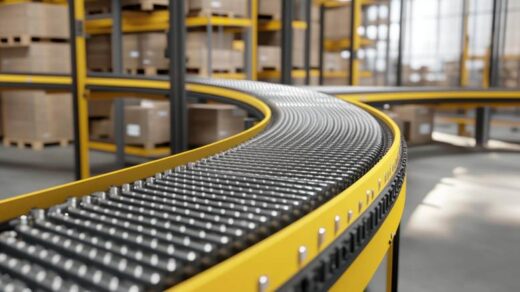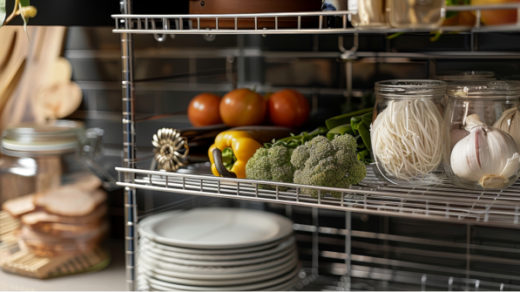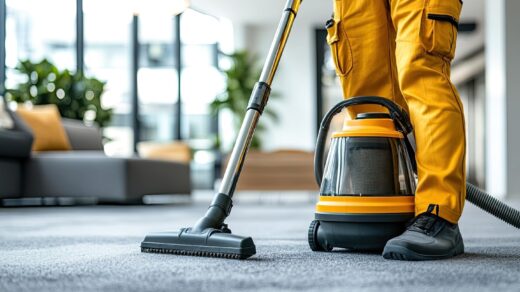
Clean and well-maintained floors are more than just a matter of appearance—they play an essential role in safety, efficiency, and professional presentation within commercial and industrial spaces. From busy office complexes and retail storefronts to warehouses, hotels, and healthcare facilities, flooring experiences daily wear and tear that can compromise both function and aesthetics. Facility managers and business owners know the challenge: keeping floors spotless and safe is not easy, yet it is critical.
Global Industrial Port Washington reviews a detailed overview of modern solutions for maintaining floors of every type. With the right machines, cleaning supplies, and maintenance strategies, organizations can preserve flooring investments, enhance workplace safety, and ensure spaces consistently reflect professionalism.
Understanding Floor Surfaces and Their Needs
Every floor surface comes with its own strengths, vulnerabilities, and care requirements. The first step to effective maintenance is knowing the material underfoot and matching it with the right cleaning tools and products.
- Concrete and Stone
Concrete and stone surfaces are the workhorses of commercial and municipal spaces. Durable and cost-effective, they can withstand heavy foot traffic and equipment, but without proper sealing and upkeep, stains and damage quickly take hold. A regular care routine involves sweeping away debris, scrubbing with non-acidic solutions, and applying sealers to protect against moisture and grime. Floor scrubbers are especially effective for industrial environments, while heavy-duty concrete cleaners help break down oil and dirt that penetrate porous surfaces.
- Vinyl, LVT, and Linoleum
Vinyl and linoleum flooring is favored for its resilience and low maintenance. Still, without the proper care, these surfaces can lose their shine. The best approach includes sweeping or dry-mopping to prevent scratches, followed by cleaning with a pH-balanced solution. Over time, professional polishers can restore gloss, while floor strippers allow for deep cleaning when old wax layers need removal.
- Hardwood
Hardwood floors offer timeless beauty but demand a delicate touch. Harsh chemicals, abrasive tools, or excess water can quickly lead to damage. Instead, maintenance relies on gentle, wood-safe cleaners, soft-bristled brooms, and mop buckets with wringers to carefully control moisture. A well-cared-for hardwood surface maintains its rich character for years, provided preventive care is consistent.
- Laminate
Laminate flooring offers a wood-like appearance with more resistance to moisture, making it a popular alternative. However, laminate also benefits from gentle, non-abrasive cleaning. Microfiber mops and laminate-safe cleaning solutions work best, lifting dirt without scratching or dulling the finish. Damp cleaning should be done sparingly, with no standing water left behind.
- Ceramic Tile
Ceramic flooring is often seen in kitchens, restrooms, and other areas where durability meets design. Tiles are easy to clean, but grout lines present a greater challenge. Specialized grout cleaners paired with scrub brushes keep surfaces fresh. For a polished look, floor polishers can restore tile’s natural shine, while consistent sweeping prevents scratches from debris.
- Carpet
Carpet provides warmth and comfort but demands frequent attention to stay clean and allergen-free. Daily vacuuming is essential, particularly in hospitality and office environments. For deeper cleans, carpet extractors and steam cleaners help remove dirt and sanitize fibers. Spot cleaners tackle spills before they become stains, while deodorizing solvents maintain a fresh environment. Carpets with regular care not only look better but also contribute to improved indoor air quality.
Essential Floor Care Machines
Beyond understanding surfaces, successful floor maintenance requires the right machines. Modern floor care equipment saves time, improves efficiency, and delivers superior results compared to manual cleaning alone.
- Sweepers: Ideal for collecting dust and debris quickly, sweepers are indispensable for high-traffic areas.
- Scrubbers: These machines wash and scrub simultaneously, perfect for large industrial spaces with stubborn stains.
- Floor Burnishers: Essential for high-gloss finishes, burnishers polish hard surfaces to professional standards.
- Vacuums: With models ranging from upright to backpack, vacuums remain central to carpet care. HEPA-filtered units add the benefit of allergen reduction.
- Steam Cleaners: Offering a chemical-free sanitization method, steam cleaners are well-suited for healthcare and foodservice environments.
- Carpet Extractors: Designed to deep-clean carpets, extractors lift embedded dirt and moisture for renewed freshness.
- Dryer Fans: After wet cleaning, dryer fans prevent mold and minimize downtime by accelerating the drying process.
Tools, Accessories, and Supplies
Floor machines work best when paired with the right tools and accessories. A complete maintenance program requires more than just large equipment.
- Scrub Brushes: Crucial for grout or textured surfaces where dirt builds up.
- Brooms and Dusters: Necessary for daily debris removal and dust management.
- Mops and Buckets: Still one of the most relied-upon tools, particularly when paired with wringers for water control.
- Replacement Parts: Brushes, pads, bags, and filters ensure machines stay in top working order.
The Role of Floor Pads
Floor pads are specialized accessories that enhance machine performance. From stripping pads that remove old wax to polishing pads that deliver a mirror-like shine, each type serves a unique purpose. Buffing pads address scuffs, carpet bonnets deep clean fibers, and burnishing pads restore gloss. Eco-friendly options made with recycled materials are increasingly available, helping organizations meet sustainability goals while maintaining performance.
Don’t Overlook Floor Mats
Mats may seem secondary to cleaning machines, but they play a frontline role in preventing dirt and moisture from ever reaching the floor. Entrance mats reduce tracked-in debris, drainage mats improve safety in wet environments, anti-fatigue mats provide comfort to workers, and chair mats protect office flooring from rolling wear. Each type extends floor life while reducing cleaning demands.
Building an Effective Floor Care Program
Ultimately, successful facility floor care requires a balanced approach: the right machines, proper supplies, and consistent practices. No single solution works for every surface, but with a tailored combination of cleaners, polishers, sealers, vacuums, mats, and pads, businesses can achieve long-term durability and appearance.
Great floor care is not a one-time project but an ongoing process. By investing in quality machines and cleaning products, facilities ensure their floors remain safe, sanitary, and inviting. For employees, customers, and guests alike, clean floors create a positive impression and support the professional image every organization strives to maintain.



